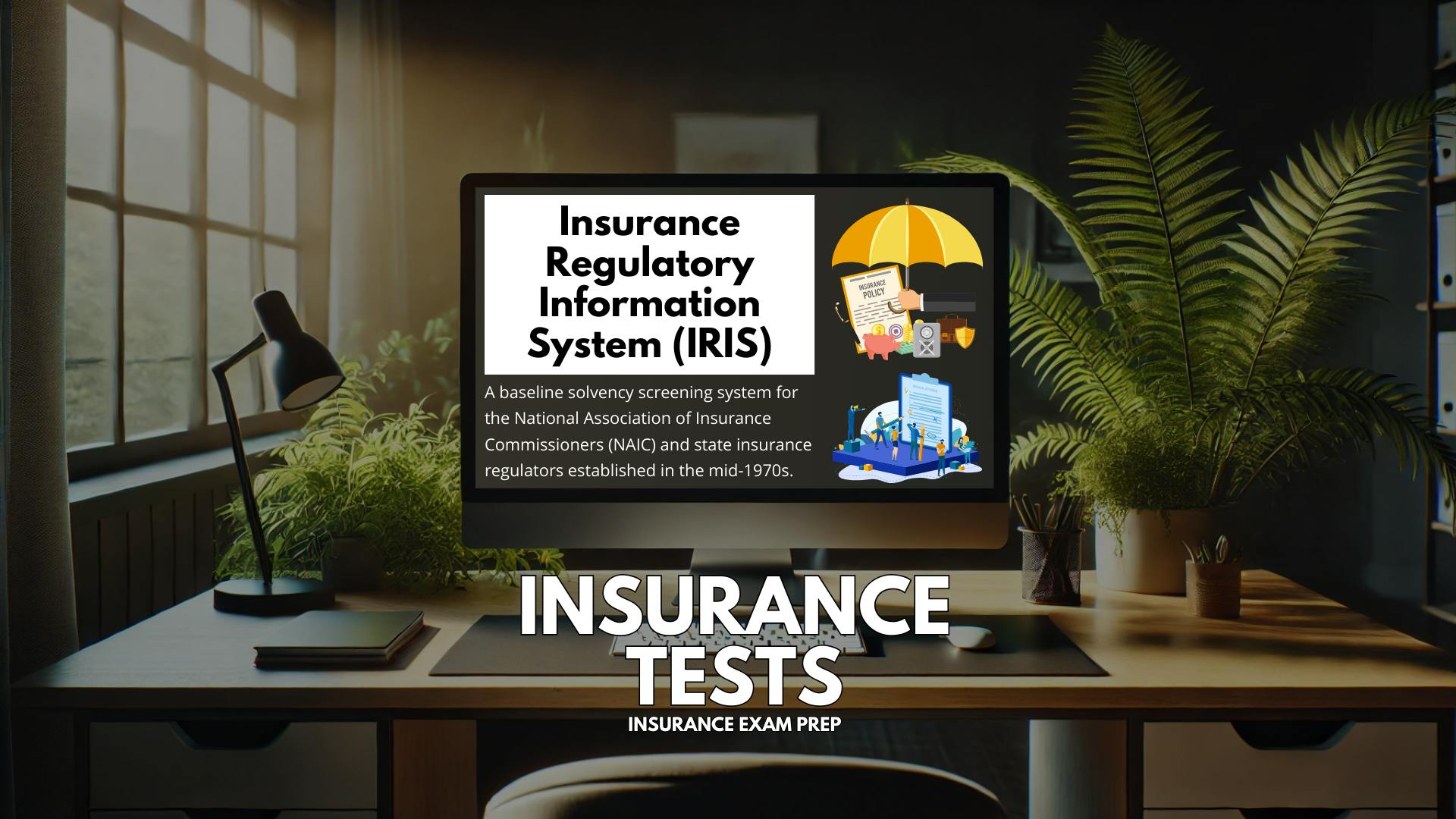Insurance Regulatory Information System (IRIS) - License Exam Study Terms
Master the Essentials of IRIS to Ace Your Insurance Exam and Launch Your Career in Insurance

Get Instant Access Today!
-
1000+ insurance Licensing Exam Practice Test Questions
-
Detailed Answer Explanations for Clear Comprehension
-
Available on any device, study at home or on the go!
-
Access to Vocabulary Terms and Glossary Study Flashcards
-
One Time Payment, No Subscription

Insurance Regulatory Information System (IRIS) - License Exam Study Terms
For students preparing for their insurance licensing exam, understanding the Insurance Regulatory Information System (IRIS) is crucial. Developed by the National Association of Insurance Commissioners (NAIC), IRIS serves as a financial monitoring tool that state insurance regulators use to evaluate the financial health and stability of insurance companies.
In this article, we will break down the purpose, components, and importance of IRIS to help you confidently tackle exam questions and gain a solid foundation for your insurance career.
What Is the Insurance Regulatory Information System (IRIS)?
The Insurance Regulatory Information System (IRIS) was established to help state regulators identify potential financial risks among insurance companies. It acts as an early warning system, highlighting insurers that may need closer examination due to signs of financial distress.
The system relies on a set of financial ratios and analytical tools that assess key financial metrics, such as profitability, liquidity, and reserve adequacy. By pinpointing unusual financial patterns, regulators can prioritize their efforts and intervene if necessary to protect policyholders.
Why IRIS Matters for Your License Exam
Understanding IRIS is important for two key reasons:
- Exam Relevance
Questions about IRIS frequently appear on insurance licensing exams. You may be asked about its purpose, how it works, or the significance of specific ratios.
- Career Foundation
Beyond the exam, knowledge of IRIS helps you understand how regulators maintain market stability, ensuring insurance companies remain solvent and meet their obligations to policyholders.
Key Components of the IRIS System
- Financial Ratios
The heart of IRIS lies in its financial ratios. These ratios are tools used to analyze the financial condition of insurance companies. There are:
- 13 IRIS Ratios for Property & Casualty insurers
- 12 IRIS Ratios for Life & Health insurers
These ratios measure various aspects of an insurer’s performance:
- Profitability: Is the insurer generating enough income?
- Liquidity: Can the insurer meet short-term obligations?
- Reserve Adequacy: Does the insurer have sufficient funds to pay future claims?
- Benchmark Ranges
Each financial ratio has a "usual range" established by the NAIC. Results that fall outside these ranges are flagged for further review. However, a flagged ratio does not necessarily indicate insolvency; it simply signals the need for closer examination by regulators.
- Regulatory Analysis
Regulators use the IRIS ratios and benchmarks to analyze insurers' financial statements. Companies showing multiple unusual ratios may undergo additional scrutiny, including audits or on-site examinations.
The Role of IRIS in Insurance Regulation
IRIS plays a vital role in protecting policyholders and maintaining a stable insurance market. It helps regulators:
- Identify Financial Risks Early
By flagging unusual ratios, IRIS allows regulators to detect potential financial troubles before they escalate
- Efficiently Allocate Resources
Regulators can focus their efforts on insurers that need the most attention, ensuring their time and resources are used effectively
- Ensure Policyholder Protection
By monitoring solvency, IRIS helps ensure insurers can meet their promises to policyholders
IRIS Ratios You Need to Know
For your licensing exam, understanding the purpose of IRIS ratios is key. While you don’t need to memorize the exact formulas, you should know what these ratios assess:
- Profitability Ratios
Measure an insurer’s earnings relative to its expenses
- Liquidity Ratios
Assess whether an insurer has enough liquid assets to pay short-term claims
- Reserve Ratios
Evaluate if the company has set aside sufficient reserves for future claims
By understanding these categories, you’ll be better equipped to answer questions about how IRIS assesses insurer stability.
Tips for Exam Success
- Focus on Purpose
Understand that IRIS exists to help regulators identify financially troubled insurers
- Know the Key Ratios
Familiarize yourself with the general categories of IRIS ratios—profitability, liquidity, and reserve adequacy
- Understand Benchmark Ranges
Recognize that ratios outside the usual range are flags for further review, not immediate failure
- Practice Questions
Use the Insurance Tests exam prep platform to review IRIS-related questions and test your knowledge
The Insurance Tests Advantage
The Insurance Regulatory Information System (IRIS) is a cornerstone of insurance regulation, helping ensure insurers remain financially sound and capable of serving their policyholders. For students preparing for their insurance licensing exam, mastering the basics of IRIS—including its purpose, components, and key ratios—will give you a competitive edge.
At Insurance Tests, we’re committed to providing the resources and tools you need to succeed. With a clear understanding of IRIS, you’ll be one step closer to passing your exam and launching a successful career in the insurance industry.

Get Insurance Tests Exam Prep & Pass the Insurance Licensing Exam
Passing the Insurance Licensing Exam is a critical step for anyone looking to build a career in the insurance industry. At Insurance Tests, we’ve created a comprehensive suite of tools to ensure every student has the resources they need to succeed on exam day, backed by our 100% Pass Money-Back Guarantee. Our program includes over 1000 up-to-date practice questions with detailed answer explanations, ensuring you’re studying with the latest material.